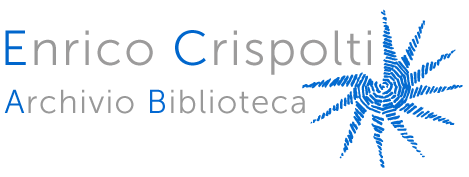The Enrico Crispolti Library is a private institution based in Rome that was established in the mid-1950s at the same time as the Enrico Crispolti Archive, in close connection with the development of Enrico Crispolti’s historical and critical activity.
The library material mainly documents the history of art in Europe and America between the 19th and 21st centuries in the overall framework of contemporary culture, social and political life, history and philosophy. It consists of a collection of over 85,000 publications, including general volumes, monographs, reasoned catalogs of the artists’ work and exhibition catalogs relating to movements, situations, groups and individual artists. A small part of the materials is already inserted in the SBN system, the remainder is being inserted.
The Enrico Crispolti Library has been declared of public interest and subject to restrictions under the Presidential Decree no. 1409 of 30 September 1963, by the provision of the Superintendence of Archival and Library Heritage of Lazio of 14 November 1992.

